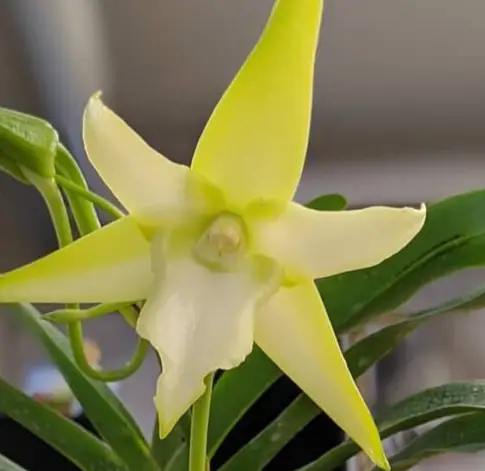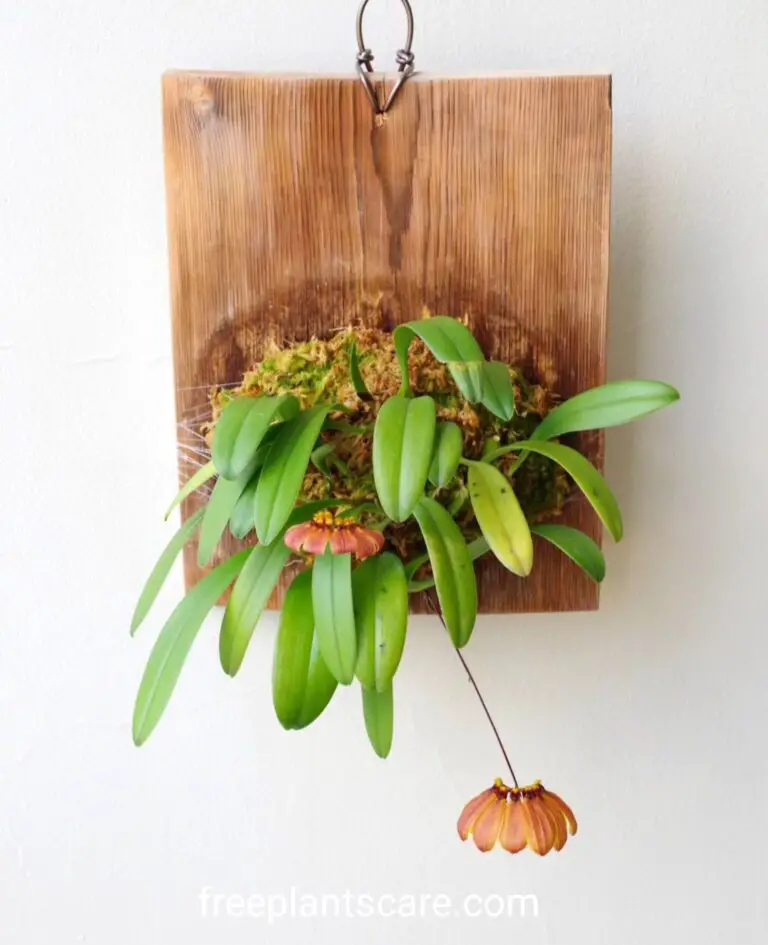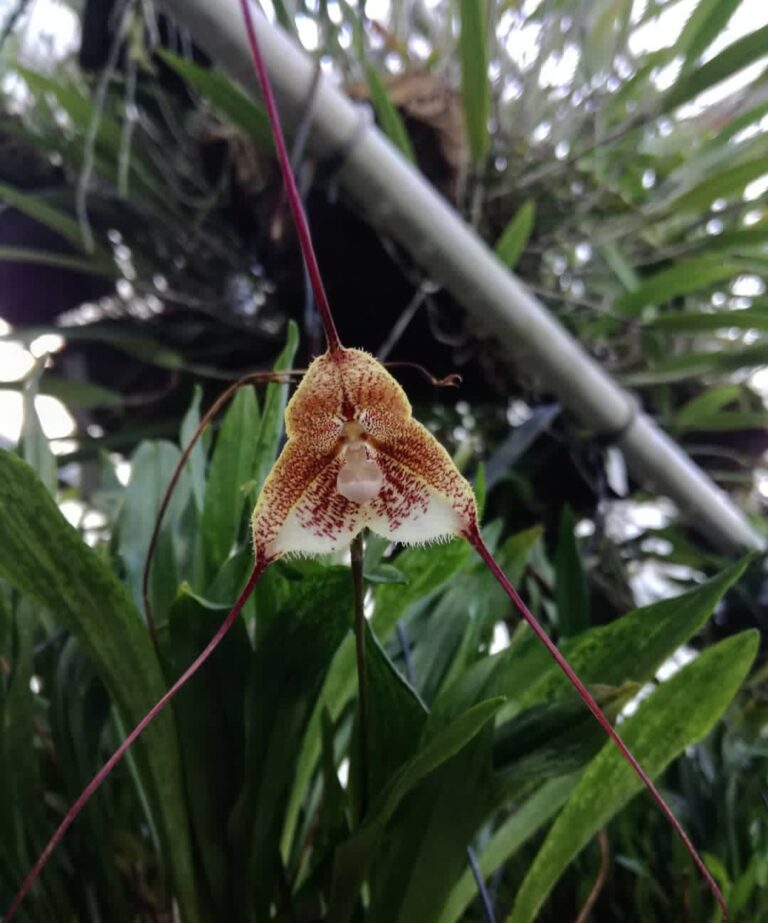Mini Phalaenopsis orchids, often called “mini Phals,” are cherished for their delicate beauty, compact size, and ability to produce stunning, long-lasting blooms. These miniature orchids are perfect for small spaces, making them an ideal choice for both beginners and seasoned orchid enthusiasts. Unlike their larger counterparts, mini Phals require specific care techniques to flourish, ensuring they stay healthy and continue to bloom multiple times a year.
From selecting the perfect potting medium to providing optimal lighting and humidity, there are several crucial factors to consider when growing these exquisite orchids. In this comprehensive guide, we will uncover ten jaw-dropping care secrets that will help your mini Phalaenopsis orchid thrive and bloom abundantly year after year. With the right care, your mini Phal can become a long-lasting centerpiece in your home, adding an elegant touch of nature to any indoor space.

- 1 1. Choose the Right Potting Medium
- 2 2. Master the Watering Technique
- 3 3. Provide Indirect, Bright Light
- 4 4. Maintain the Perfect Temperature and Humidity
- 5 5. Fertilize for Vibrant Blooms
- 6 6. Repot Every Two Years
- 7 7. Encourage Reblooming
- 8 8. Watch Out for Pests and Diseases
- 9 9. Support Healthy Roots
- 10 10. Be Patient and Enjoy the Process
- 11 FAQs: Mini Phalaenopsis Orchids
1. Choose the Right Potting Medium
Unlike standard houseplants, mini Phals require a well-draining potting mix that supports proper root aeration. A blend of fine-grade bark, sphagnum moss, and perlite provides the perfect balance of moisture retention and drainage. Avoid standard potting soil, as it retains too much water and can suffocate the roots, leading to rot. The right medium ensures the roots stay hydrated without becoming waterlogged.
Quick Tip: Use clear plastic pots with drainage holes to monitor root health and moisture levels. This allows you to see when roots need watering or if they are developing problems like rot.
2. Master the Watering Technique
Overwatering is the number one killer of orchids, including mini Phals. These delicate plants thrive when their roots dry slightly between waterings, mimicking their natural epiphytic habitat. A good rule of thumb is to water every 5-7 days, but this can vary depending on the humidity and temperature of your environment. Too much water leads to root rot, while too little can dehydrate the plant.
Pro Secret: Water your orchid in the morning using room-temperature water to prevent fungal infections. This allows excess moisture to evaporate during the day, reducing the risk of rot and mold.
3. Provide Indirect, Bright Light
Mini Phals flourish in bright, indirect light that mimics their natural forest canopy environment. Direct sunlight can scorch their delicate leaves, causing yellowing or brown spots, while insufficient light may prevent flowering. A north- or east-facing window is ideal, as it provides gentle sunlight without excessive heat.
Light Hack: If natural light is insufficient, use a full-spectrum grow light to supplement light exposure. This helps maintain healthy foliage and encourages regular blooming cycles.
4. Maintain the Perfect Temperature and Humidity
Mini Phalaenopsis orchids prefer temperatures between 65-75°F (18-24°C) during the day and slightly cooler at night. They also thrive in humidity levels of 50-70%. Dry air can cause wrinkled leaves and hinder blooming, while overly humid conditions may promote fungal growth.
Humidity Boost: Use a humidity tray filled with water and pebbles or mist your orchid lightly in the morning to maintain ideal moisture levels. A small humidifier can also help regulate humidity in drier climates.
5. Fertilize for Vibrant Blooms
Regular feeding is essential for mini Phalaenopsis orchids to produce vibrant, long-lasting blooms. Use a balanced orchid fertilizer (20-20-20) diluted to half strength every two weeks to provide essential nutrients. Nitrogen supports healthy leaves, phosphorus encourages flower production, and potassium strengthens the overall plant structure.
Insider Tip: Switch to a bloom booster fertilizer (high in phosphorus) during the flowering season to enhance blooming and prolong the lifespan of flowers.
6. Repot Every Two Years
Over time, the potting medium breaks down, becoming compacted and retaining too much moisture, which can lead to root rot. Repot your mini Phal every two years with fresh bark or sphagnum moss to ensure proper drainage and healthy root development. Repotting also allows you to remove any dead or damaged roots.
Repotting Trick: Always repot after blooming to minimize stress on the plant. Avoid repotting when buds are forming, as this may cause flower loss.
7. Encourage Reblooming
After the flowers fade, you can encourage reblooming by trimming the spike just above the second or third node. If the orchid is healthy and conditions are right, it may produce a secondary flower spike from the same stem, resulting in additional blooms.
Bonus Secret: Provide a slight temperature drop (10°F lower at night) to trigger flowering. This mimics the natural seasonal changes orchids experience in the wild.
8. Watch Out for Pests and Diseases
Common pests like spider mites, aphids, and mealybugs can infest mini Phalaenopsis orchids, feeding on leaves and stems. Regularly inspect your orchid for signs of pests, such as sticky residue or tiny moving specks. If pests appear, wipe the leaves with a neem oil solution or insecticidal soap to eliminate them.
Preventative Measure: Ensure good air circulation around the plant to reduce the risk of fungal and bacterial infections. Avoid letting water sit in the crown, as this can lead to crown rot.
9. Support Healthy Roots
A flourishing orchid is built on strong roots.Look for firm, green roots when watering, and trim away any mushy, brown, or shriveled ones during repotting. Strong roots ensure the plant absorbs nutrients efficiently and supports robust growth.
Expert Tip: Soak the roots in water for 10 minutes before repotting to make them more flexible and easier to handle. This reduces the risk of damaging them during the transition to a new medium.
10. Be Patient and Enjoy the Process
Orchids require patience and attentive care, but their breathtaking blooms make the effort worthwhile. Mini Phals may take time to rebloom, especially after repotting or environmental changes, but consistent care will reward you with stunning, long-lasting flowers year after year. Treat your orchid as a living masterpiece and enjoy its evolving beauty.
Final Thought: Treat your orchid with care, and it will flourish beautifully in your home! The more you learn about its needs, the more successful you’ll be in keeping it healthy and thriving.
Caring for a mini Phalaenopsis orchid doesn’t have to be intimidating. With the right techniques, you can enjoy these exquisite plants with minimal effort. Follow these ten jaw-dropping care secrets, and your mini Phal will thrive like never before, bringing elegance and beauty into your space!
FAQs: Mini Phalaenopsis Orchids
What are Mini Phalaenopsis Orchids?
Mini Phalaenopsis Orchids are smaller varieties of the popular Phalaenopsis orchids, prized for their delicate blooms and compact size. These orchids are perfect for small spaces, thriving indoors with proper care. Mini Phalaenopsis Orchids are easy to grow, requiring bright, indirect light, moderate humidity, and a well-draining potting mix for optimal health.
What is the best light for Mini Phalaenopsis Orchids?
Mini Phalaenopsis Orchids flourish in bright, indirect light, making them ideal for windowsills or well-lit rooms. Direct sunlight can scorch their delicate leaves, so placing them near an east or north-facing window is best. If natural light is insufficient, artificial grow lights can supplement their needs, ensuring steady and healthy growth.
Can Mini Phalaenopsis Orchids rebloom?
Yes, Mini Phalaenopsis Orchids can rebloom with proper care. Once the flowers fade, trim the spike just above a node to encourage new blooms. Providing the right balance of water, light, and nutrients will help trigger another flowering cycle. Maintaining a stable environment with warm temperatures also promotes continuous blooming.
What temperature do Mini Phalaenopsis Orchids prefer?
Mini Phalaenopsis Orchids grow best in temperatures between 65-80°F (18-27°C) during the day and slightly cooler at night. These orchids are sensitive to extreme temperature fluctuations, so avoid placing them near heating vents or cold drafts. A stable temperature ensures healthy growth, prolonged blooming, and overall plant vitality.
What type of potting mix is best for Mini Phalaenopsis Orchids?
Mini Phalaenopsis Orchids require a well-draining orchid mix that allows airflow to the roots. A combination of bark, sphagnum moss, and perlite works well for retaining moisture while preventing root rot. The right potting medium helps mimic the orchid’s natural growing conditions, ensuring it receives adequate aeration and moisture control.
Do Mini Phalaenopsis Orchids need high humidity?
Yes, Mini Phalaenopsis Orchids thrive in humidity levels between 50-70%. If the air is too dry, consider using a humidity tray, misting the leaves lightly, or placing a small humidifier nearby. Maintaining proper humidity prevents leaf dehydration, encourages root health, and helps sustain the plant’s overall vitality for longer-lasting blooms.
Can Mini Phalaenopsis Orchids grow without soil?
Yes, Mini Phalaenopsis Orchids can be grown in alternative setups such as mounted displays or hydroponic systems. These methods require careful attention to moisture management since the roots are exposed to air. Using sphagnum moss or hydroton pebbles can help maintain moisture while still providing adequate airflow to the roots.
When should I repot Mini Phalaenopsis Orchids?
Repot Mini Phalaenopsis Orchids every 1-2 years or when their potting medium starts to break down. If roots begin growing outside the pot or appear crowded, it’s time for a larger container. Fresh orchid bark mix provides better aeration and nutrient absorption, helping the plant grow healthier and bloom successfully.
Why are the leaves on my Mini Phalaenopsis Orchids turning yellow?
Yellow leaves on Mini Phalaenopsis Orchids can result from overwatering, underwatering, or excessive direct sunlight. If the problem persists, check for root rot or nutrient deficiencies. Adjust watering practices, relocate the plant to indirect light, and fertilize appropriately to restore the plant’s health and maintain lush green foliage.
Can Mini Phalaenopsis Orchids grow in low light?
Mini Phalaenopsis Orchids can tolerate low light conditions, but their bloom cycle may be affected. While they prefer bright, indirect light, they can still survive in dimmer settings. Using artificial grow lights can compensate for low natural light, ensuring the orchids continue to grow, remain healthy, and produce beautiful flowers.
Do Mini Phalaenopsis Orchids need air circulation?
Yes, Mini Phalaenopsis Orchids require proper air circulation to prevent fungal and bacterial infections. Stagnant air can lead to mold growth and rot. Placing a small fan nearby or ensuring they are not in an enclosed, humid space helps keep the orchids healthy. Good airflow promotes strong root and leaf development.
Are Mini Phalaenopsis Orchids beginner-friendly?
Yes, Mini Phalaenopsis Orchids are among the easiest orchids to care for, making them ideal for beginners. They adapt well to indoor environments and require minimal maintenance. As long as they receive proper watering, lighting, and occasional fertilization, these orchids will thrive, rewarding growers with beautiful, long-lasting flowers.






